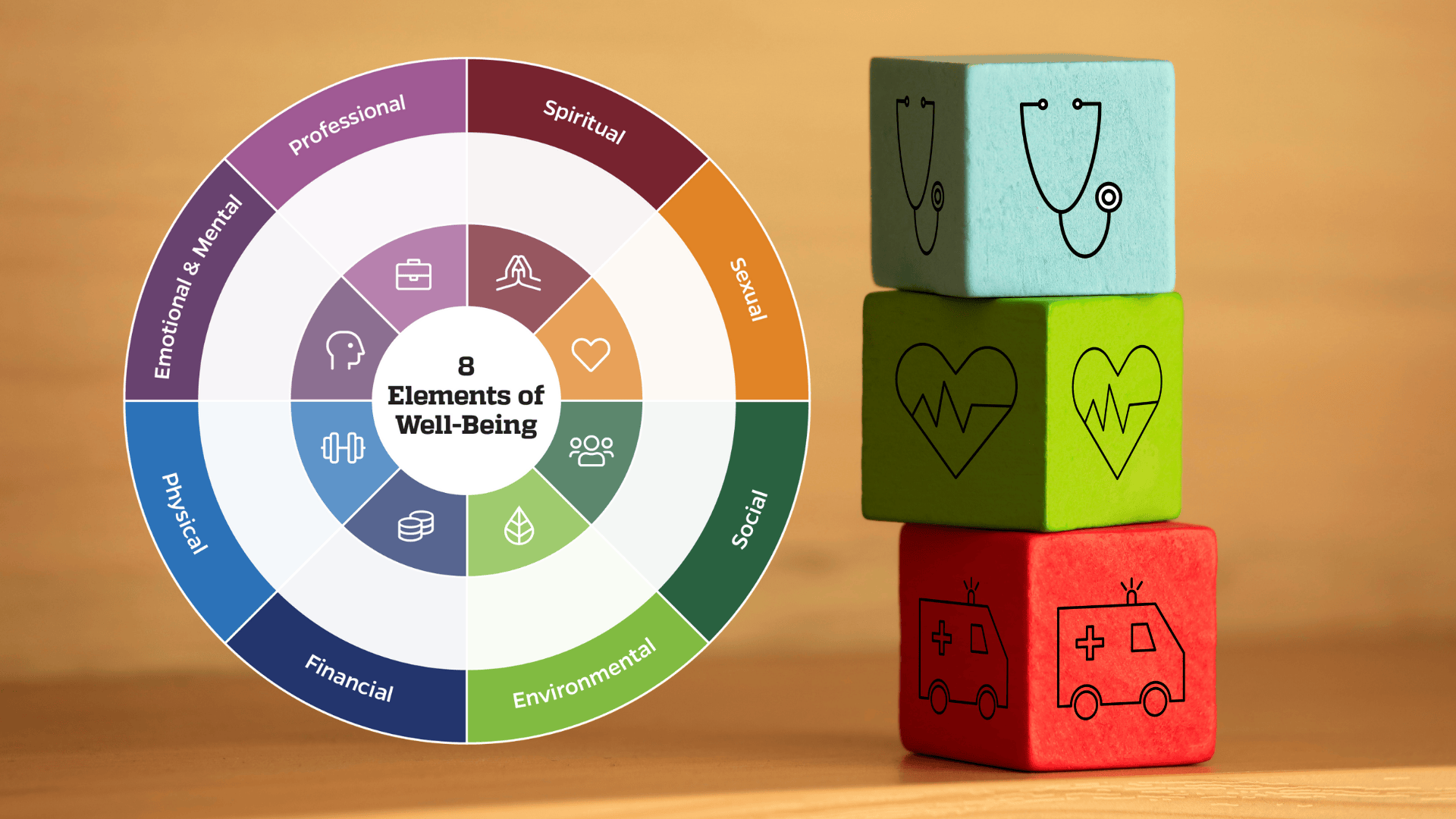I’ve learned that staying healthy isn’t just about avoiding sickness. It’s about finding balance in the different parts of life that matter most: your body, your thoughts, your relationships, your surroundings, and even your sense of meaning.
All of these areas are connected, and when one is off, it can affect the rest.
In this blog, I’ll summarize how the components of health are related to wellness in a way that feels practical and easy to understand.
You’ll see how each part supports the others, and why balance is the key to feeling steady and fulfilled. By the end, you’ll have a clear view of how to care for your overall well-being.
How the Components of Health are Related to Wellness?
Wellness is shaped by multiple components of health: physical, emotional, social, spiritual, and intellectual. Together, these create balance and allow a person to feel strong and fulfilled.
To summarize how the components of health are related to wellness, each depends on the others. For example, ongoing stress can damage physical health, while poor social connections can weaken emotional stability.
A useful way to think about it is like a wheel: each component is a spoke. If one spoke is weak, the wheel cannot roll smoothly. When all are balanced, wellness is steady and sustainable.
The Core Components of Health

Each part of health plays a unique role in shaping your overall wellness. Some areas focus on your body, while others support your mind, relationships, or sense of purpose.
Together, they create a complete picture of well-being. Let’s look at the core components and how they connect to your daily life.
1. Physical Health
Physical health is the foundation of overall wellness. It covers the basics, nutrition, physical activity, sleep, and routine check-ups. A healthy body gives you the strength to handle daily challenges and protects against chronic disease.
For instance, regular exercise not only builds endurance but also releases endorphins that improve mood. Similarly, consistent sleep restores energy and sharpens focus, which strengthens both emotional and intellectual health.
2. Emotional & Mental Health
Emotional and mental health involve recognizing, understanding, and managing thoughts and feelings. Good emotional health builds resilience, helps manage stress, and supports positive decision-making.
When emotions are in balance, it’s easier to build strong relationships, stay motivated at work or school, and maintain physical habits like exercising or eating well. Techniques like mindfulness, therapy, or journaling can keep this component strong.
3. Social Health
Humans are naturally social. Relationships with family, friends, and community provide support, reduce stress, and create a sense of belonging. Social health isn’t about the number of relationships; it’s about their quality.
Positive connections can even encourage better physical health habits, such as exercising with friends or eating healthier meals with family. On the other hand, loneliness can increase stress and negatively impact mental health.
4. Spiritual Health
Spiritual health is about finding meaning and purpose in life. For some, this comes from religion, while for others, it’s about values, ethics, or connection to nature.
A strong spiritual foundation gives people direction and peace of mind. It helps them cope with challenges and fosters resilience, reducing stress and encouraging a more positive outlook on life.
5. Environmental Health
Environmental health means living in spaces that are safe, clean, and supportive of well-being. Fresh air, safe drinking water, and low exposure to toxins protect your body from illness.
At the same time, sustainable choices like conserving energy, recycling, or growing plants at home encourage a healthier lifestyle. When your surroundings are safe and eco-friendly, it’s easier to make positive daily choices, stay active, and maintain balance in life.
Extended Dimensions That Influence Wellness

Beyond the core areas, there are other dimensions that can shape your overall well-being. These factors may not always be the first to come to mind, but they play a big role in how balanced and healthy life feels.
Let’s look at a few extended components that also influence wellness.
6. Intellectual Health
Intellectual health refers to keeping the mind active, curious, and engaged. Reading, problem-solving, learning new skills, and having thoughtful discussions all contribute to this component.
An active mind not only sharpens memory and creativity but also improves self-confidence. Intellectual growth supports emotional well-being by reducing frustration and opening doors to new opportunities.
7. Financial Health
Financial stability reduces stress and provides security. When money is managed wisely, it’s easier to access healthy food, healthcare, and safe living conditions.
Budgeting, saving, and planning for the future are all part of financial health. Reducing financial stress frees up energy to focus on other components like relationships, personal growth, and physical health.
8. Occupational Health
Occupational health is about work-life balance, job satisfaction, and finding meaning in a career. Work that aligns with personal values supports emotional stability and reduces burnout.
Setting boundaries at work, developing new skills, and pursuing fulfilling roles help create a healthy relationship with your job while leaving time for personal life.
The Interconnection Between Health Components
Each component of health is connected to the others. Stress from finances can affect sleep, which impacts physical health and weakens focus at work.
On the other hand, improving one area, like starting an exercise routine, can boost mood, energy, and confidence, strengthening other components in the process.
Wellness requires balance, not perfection. The goal is to pay attention to each part of health so that together they form a stable, supportive whole.
Health & Wellness Practice Questions: Download Ready
Master the five components of health and their interconnected relationship to overall wellness with this comprehensive practice exercise.
Features 21 professionally crafted questions, including multiple choice, fill-in-the-blank, matching, case studies, and short answers. Includes complete answer key with detailed explanations, 100-point scoring system, and teacher-friendly format.
*Ideal for students, educators, and health professionals seeking engaging assessment tools.
Practical Ways to Strengthen Each Component
- Physical: Exercise regularly, eat nutrient-rich foods, sleep 7–9 hours, and schedule health check-ups.
- Emotionally: Journal, practice mindfulness, talk with supportive friends or professionals.
- Social: Spend quality time with loved ones, join clubs or groups, volunteer in the community.
- Spiritual: Meditate, reflect on personal values, spend time in nature, or engage in prayer.
- Intellectual: Read books, learn a new skill, take online courses, or participate in discussions.
- Environmental: Keep living spaces clean, recycle, conserve energy, and spend time outdoors.
- Financial: Create a budget, save regularly, build an emergency fund, and avoid unnecessary debt.
- Occupational: Set healthy work boundaries, pursue professional growth, and align work with personal goals.
These simple but consistent actions strengthen individual components and, over time, improve overall wellness.
Final Thoughts
I’ve shown you how the different parts of health connect and shape the way you feel day to day. When you summarize how the components of health are related to wellness, it becomes clear that balance is the real key.
You don’t need to fix everything at once. Start by focusing on one area that could use more care, and notice how it can strengthen the others.
Small steps in your physical, emotional, or even financial health add up to a healthier and steadier life. If this post gave you some ideas, take a few minutes to look through more of my blogs for simple tips and guidance.





